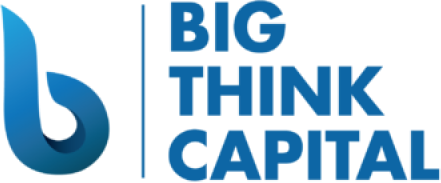How the Federal Reserve’s Latest Interest Rate Hike Impacts Your Ability to Secure Small Business Funding
Estimated Reading Time: 5 minutes
- Strengthen your financial profile by improving your credit score and managing debts.
- Explore fixed-rate products to protect against future increases.
- Diversify funding sources to maintain flexibility in securing financing.
Table of Contents
- Understanding the Federal Reserve’s Role
- How Interest Rate Hikes Impact Borrowing Costs
- Calculating the Cost of Borrowing
- Assessing Eligibility for Financing
- Practical Strategies to Navigate Higher Interest Rates
- Alternative Financing Strategies to Consider
- The Importance of Timing in Funding Decisions
- In Conclusion
- FAQ
Understanding the Federal Reserve’s Role
The Federal Reserve, often referred to as “the Fed,” plays a crucial role in the U.S. economy by regulating monetary policy. One of its primary tools is the manipulation of interest rates to either encourage spending and investment or to control inflation. A hike in the interest rates usually suggests the Fed is trying to cool down an overheating economy or combat inflation.
In early 2025, amidst a climate of fluctuating inflation rates and shifting economic growth, the Federal Reserve announced an increase in interest rates by 0.25%. This decision aims to stabilize the economy but has significant implications for small business owners seeking financial support.
How Interest Rate Hikes Impact Borrowing Costs
The most direct effect of an interest rate hike is an increase in borrowing costs. When the Fed raises interest rates, lenders tend to follow suit, adjusting their own rates upwards for various funding products, including:
- Working capital advances
- SBA loans
- Equipment financing
- Merchant cash advances (MCA)
- Lines of credit
Calculating the Cost of Borrowing
Higher interest rates can dramatically affect the overall cost of financing. Consider the following scenarios for a small business owner:
- $100,000 Loan for 5 years:
- If the interest rate is 4%, the total cost would be approximately $22,000 in interest payments.
- If the interest rate increases to 5%, the total interest payments rise to about $27,000.
This example illustrates how even a single percentage point increase can result in a significant impact on overall repayment amounts.
Assessing Eligibility for Financing
With interest rates on the rise, lenders may become more stringent in their credit assessments for business financing. Several factors typically influence eligibility:
- Credit Score: A strong credit score is essential, particularly in a higher interest rate environment. Borrowers with lower credit scores may find it more challenging to secure loans or may only qualify for higher-rate products.
- Business Revenue: Lenders often look for consistent revenue streams. If your revenue fluctuates, it might raise red flags for lenders contemplating risk levels.
- Debt-to-Income Ratio: Higher interest rates increase monthly payments, which can negatively impact this key metric. A high debt-to-income ratio signals potential risk to lenders.
Practical Strategies to Navigate Higher Interest Rates
- Strengthen Your Financial Profile: Work on improving your credit score and managing existing debts. This step could position you more favorably with lenders when applying for new financing.
- Explore Fixed-Rate Products: If rates are expected to rise further, locking in a fixed-rate loan could benefit your business over the long term, protecting you from future interest hikes.
- Diversify Your Funding Sources: With current conditions steering some lenders away from riskier applications, consider multiple financing options. This might include traditional bank loans, alternative funding solutions, and crowdfunding avenues.
Alternative Financing Strategies to Consider
In a tighter lending landscape, small business owners can consider various alternative financing options available through Big Think Capital. Here are some avenues to explore:
- SBA Loans: While they take longer to process, SBA loans often offer lower interest rates and longer repayment terms, making them more affordable over time.
- Merchant Cash Advances (MCA): For businesses with fluctuating sales, an MCA can be an appealing choice since repayment is tied to daily credit card sales.
- Equipment Financing: When investing in equipment, financing it can help manage upfront costs while allowing the new asset to generate revenue.
The Importance of Timing in Funding Decisions
Timing your funding applications can influence the rates and terms you receive. Given the current trends, here are strategies for optimal timing:
- Apply Early: The earlier you apply for funding, the better positioned you may be to secure favorable terms before rates rise any further.
- Monitor Fed Announcements: Stay updated on upcoming Fed meetings and economic indicators that influence their decisions on rates.
In Conclusion
The Federal Reserve’s interest rate hike has a direct ripple effect on small business financing. Higher borrowing costs and stricter eligibility criteria can make it more challenging for business owners to secure needed funds. However, by understanding these dynamics and implementing practical strategies, small business owners can still navigate the financial landscape effectively.
FAQ
What should I do if I can’t secure funding due to high interest rates?
Explore different funding sources, consider alternative financing options, and focus on improving your financial profile.
How often does the Federal Reserve change interest rates?
The Federal Reserve may adjust interest rates multiple times throughout the year, depending on economic conditions.
What are fixed-rate loans and why should I consider them?
Fixed-rate loans have a constant interest rate throughout the life of the loan, protecting borrowers from fluctuating rates.






